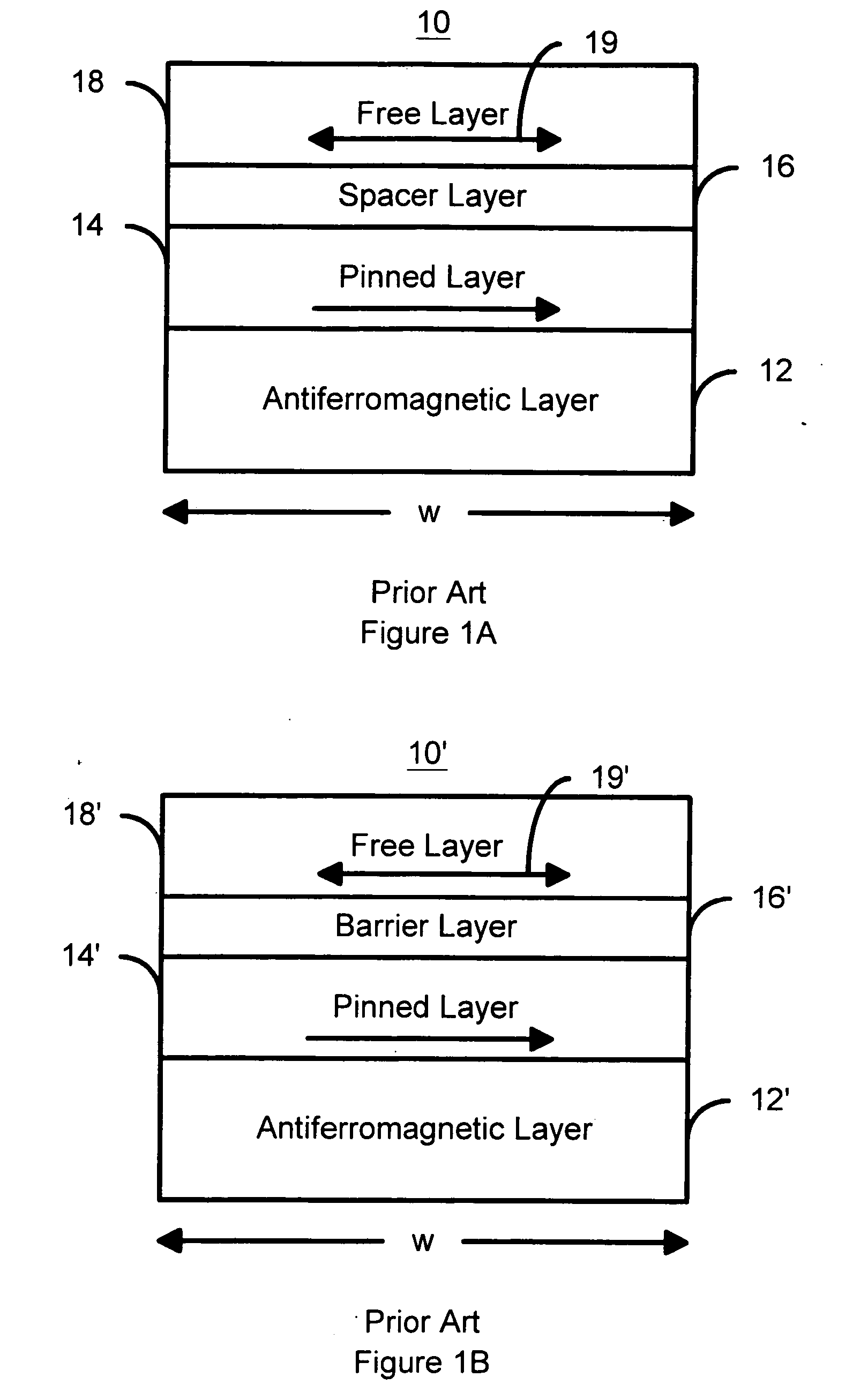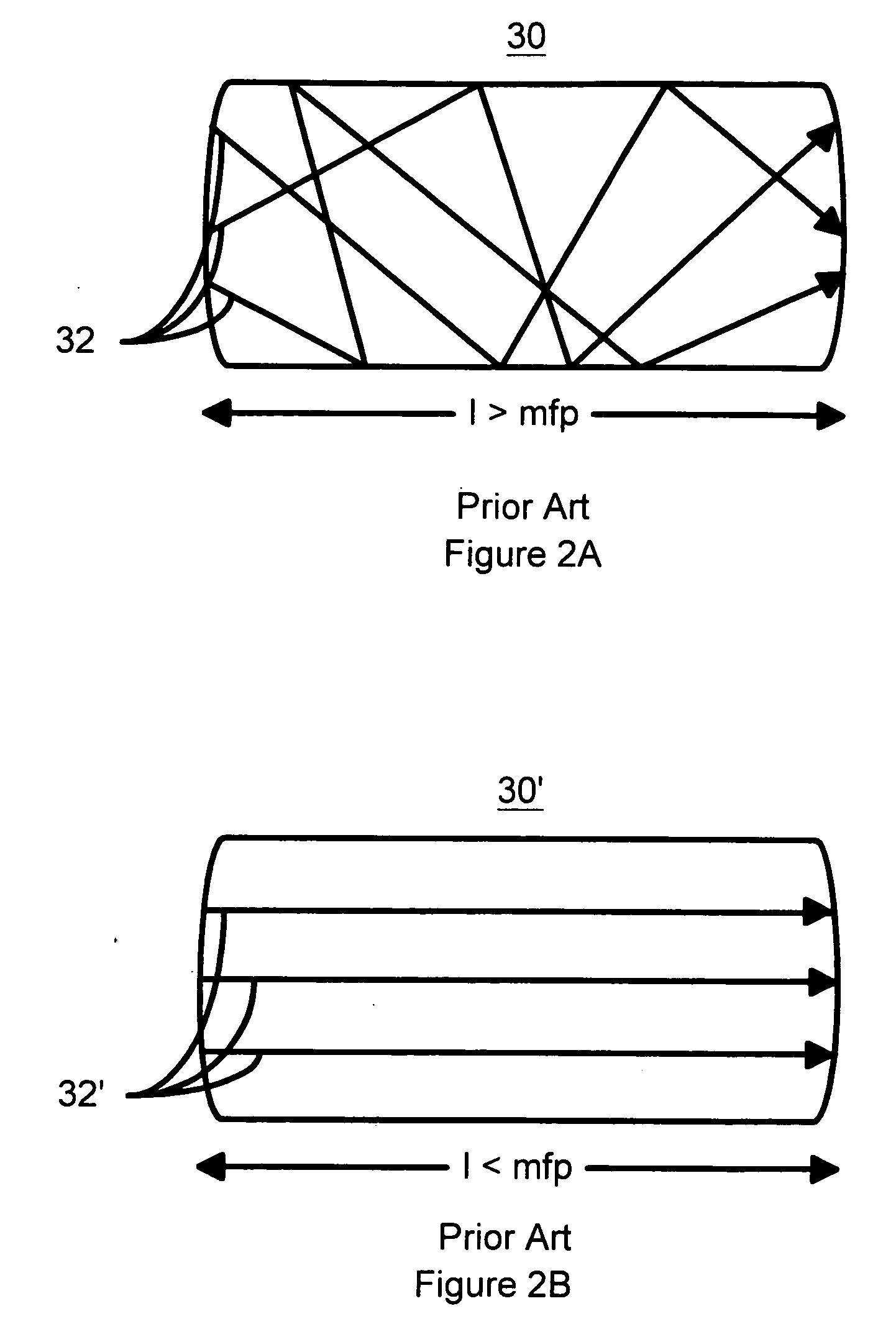Magnetic elements with ballistic magnetoresistance utilizing spin-transfer and an MRAM device using such magnetic elements
a technology of magnetic elements and ballistic magnetoresistance, which is applied in the field of magnetic memory systems, can solve the problems of high signal output, power consumption, and the probability of nearby cells being inadvertently switched, and achieve the effect of high signal outpu
- Summary
- Abstract
- Description
- Claims
- Application Information
AI Technical Summary
Benefits of technology
Problems solved by technology
Method used
Image
Examples
second embodiment
[0037]FIG. 4 is a diagram depicting a magnetic element 200 having a magnetic current confined layer in accordance with the present invention. The magnetic element 200 has components which are analogous to those of the magnetic element 100 depicted in FIG. 3. Consequently, these elements are labeled similarly. The magnetic element 200 thus includes a ferromagnetic pinned layer 210, a ferromagnetic free layer 230, and a magnetic current confined layer 220 having ferromagnetic conductive channels 224 in an insulating matrix 222. In addition, the lengths and diameters of the ferromagnetic conductive channels 224 are such that ballistic MR can be exhibited by the magnetic element 200. Stated differently, the sizes of the conductive channels 224 are such that charge carriers passing through the magnetic element 200 in a CPP configuration can give rise to ballistic MR. The ferromagnetic conductive channels 224 preferably include Ni, Fe, Co or their alloys. The insulating matrix 222 prefera...
PUM
| Property | Measurement | Unit |
|---|---|---|
| thickness | aaaaa | aaaaa |
| diameter | aaaaa | aaaaa |
| depth | aaaaa | aaaaa |
Abstract
Description
Claims
Application Information
 Login to View More
Login to View More - R&D
- Intellectual Property
- Life Sciences
- Materials
- Tech Scout
- Unparalleled Data Quality
- Higher Quality Content
- 60% Fewer Hallucinations
Browse by: Latest US Patents, China's latest patents, Technical Efficacy Thesaurus, Application Domain, Technology Topic, Popular Technical Reports.
© 2025 PatSnap. All rights reserved.Legal|Privacy policy|Modern Slavery Act Transparency Statement|Sitemap|About US| Contact US: help@patsnap.com



